You might not be able to believe it, but 1951 is over 70 years ago already! If you found a 1951 wheat penny coin, that means that it is a coin that is just as old as most grandparents today. You might be curious how the value of a coin that matches a grandparent’s age would fare today.
Luckily, you have this one-stop shop for all things about the 1951 wheat penny value. We will be talking about the value of this specific penny, its varieties, history, and more!
1951 Wheat Penny Value Details
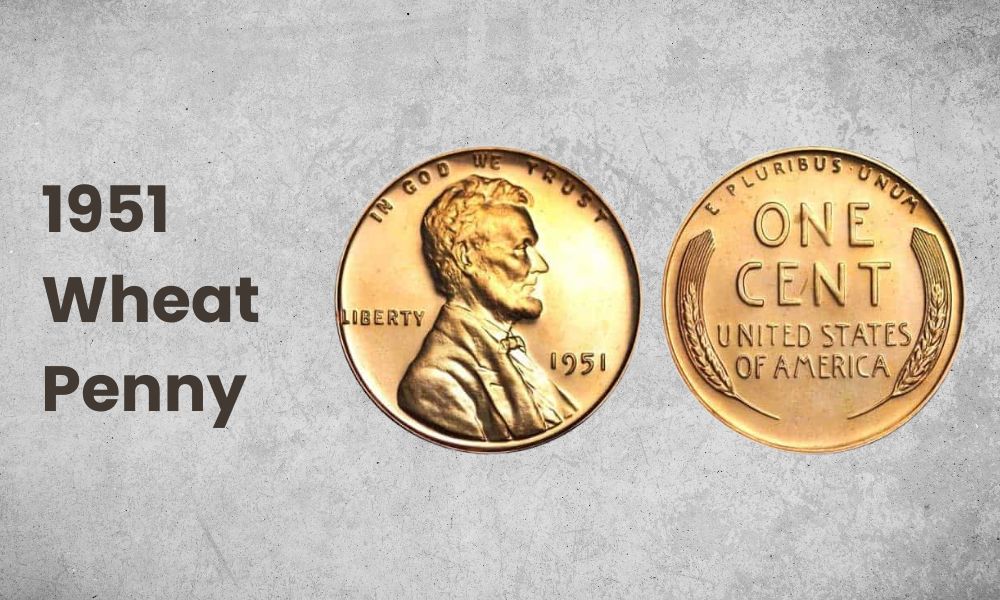
- Category: Lincoln Wheat Cent
- Mints: Philadelphia, Denver, San Francisco
- Year: 1951
- Total Mintage: 1,045,941,000
- Obverse Designer: Victor D. Brenner
- Reverse Designer: Victor D. Brenner
- Edge: Plain
- Diameter: 19.00 millimeters (0.748 inches)
- Composition: 95% copper, 5% tin, and zinc
- Weight: 3.11 grams
Also Read: Top 20 Most Valuable Old Pennies Worth Money (Penny Collection)
1951 Wheat Penny Value Value Chart
| Mint Mark | Good (G-4) | Fine (VF-12) | Extremely Fine (XF-40) | Uncirculated (MS-63) |
| 1951 (P) No Mint Mark Wheat Penny Value | – | $0.05 | $0.28 | $2.28 |
| 1951 D Wheat Penny Value | – | $0.05 | $0.13 | $2.28 |
| 1951 S Wheat Penny Value | $0.05 | $0.17 | $0.33 | $3.30 |
1951 Wheat Penny Value Values and Varieties (by Mint Mark)
1951 P No Mint Mark Wheat Penny
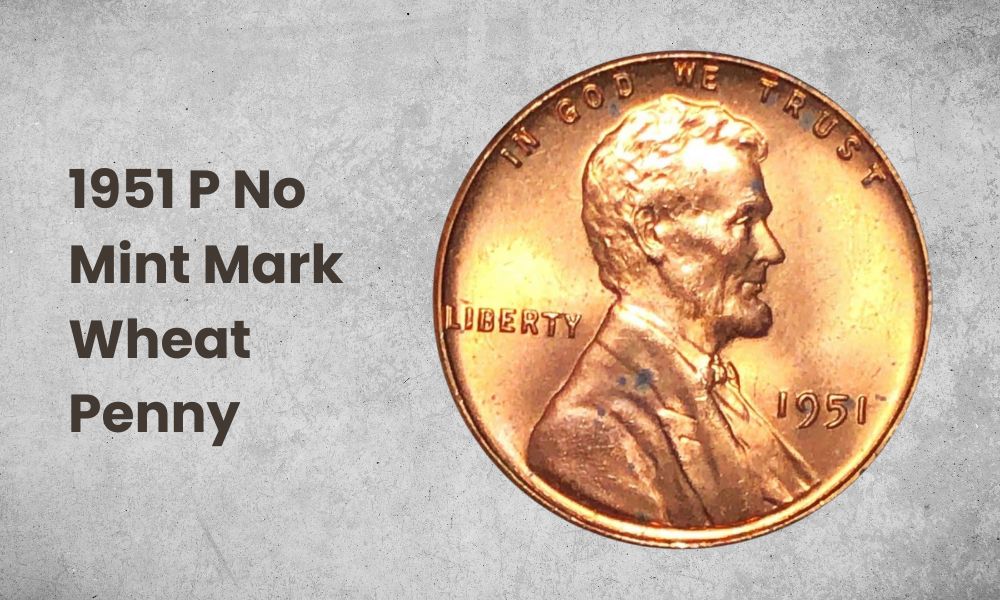
- Type: Lincoln Wheat Cent
- Edge: Plain
- Mint mark: None
- Place of minting: Philadelphia
- Year of minting: 1951
- Face value: $0.01
- $ price: $0.05 to $8,500
- Quantity produced: 284,576,000
- Designer: Victor D. Brenner
With a mintage of over 284 million, the 1951 P wheat penny also has quite the number of pieces that survived until today, estimated to be around 28,000,000. In fact, quite a lot of these pieces were also retrieved in Mint State because many original rolls of this cent were saved.
However, almost all of those surviving pieces are of lower grades, with only around 5,000 pieces that are above 60 grade. Despite the original rolls having been saved, MS-67 grade coins are still relatively rare. Most of those surviving pieces are also brown, instead of the more valuable red-brown and red varieties.
Given its face value of one cent, grades below MS-60 do not have a high value, hovering around $0.05 to $0.28. An MS-63 B can reach up to $2.28, but the red variety can easily reach north of $100, with an MS-67+ R reaching $8,500.
The current auction record is $10,350 for an MS-67 Red coin.
1951 D Wheat Penny
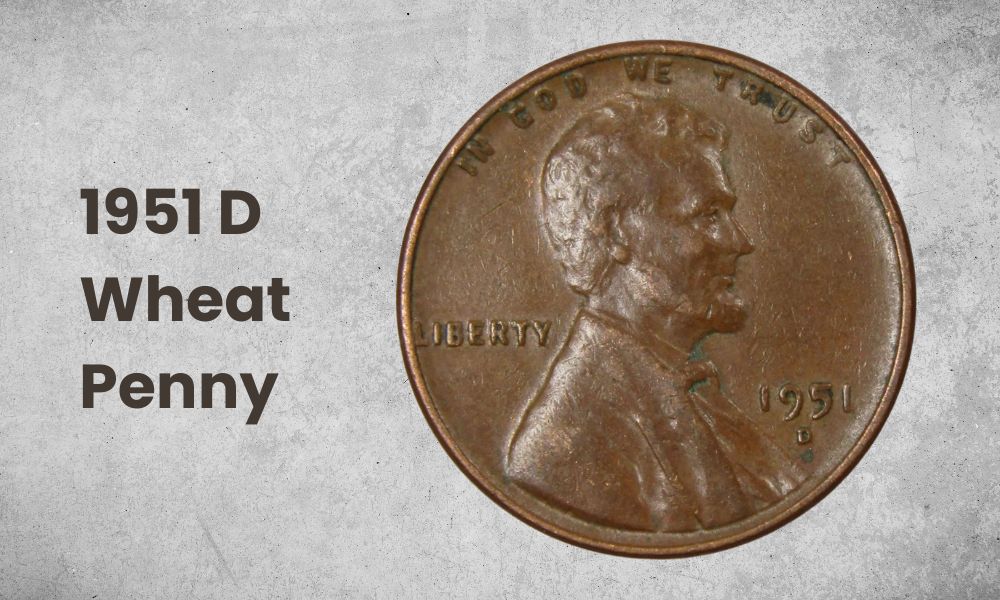
- Type: Lincoln Wheat Cent
- Edge: Plain
- Mint mark: D
- Place of minting: Denver
- Year of minting: 1951
- Face value: $0.01
- $ price: $0.05 to $7,000
- Quantity produced: 625,355,000
- Designer: Victor D. Brenner
The Denver coins comprise almost 60% of the total mintage of the 1951 wheat pennies. With this higher count, they also have a higher survival count of around 62 million. However, most of these pieces are of circulated condition.
This coin also had the highest mintage for any Denver Mint cent to date, and these coins were considered to be very well-made and preserved in original rolls. High-grade examples are common until MS-65.
Similar to the 1951 P coins, higher grade condition 1951 D pennies are also quite rare, more so when you are looking for the more valuable red-brown and red varieties, with only over 4,000 of those pieces being MS-65 and above.
The 1951 D wheat penny has the same value as the S wheat penny across most lower-grade conditions, if not lower because of their higher survival count. However, the red variety can go for as much as $7,000 for an MS-68 piece.
The current auction record is $6,600 for an MS-68 RD coin.
1951 S Wheat Penny
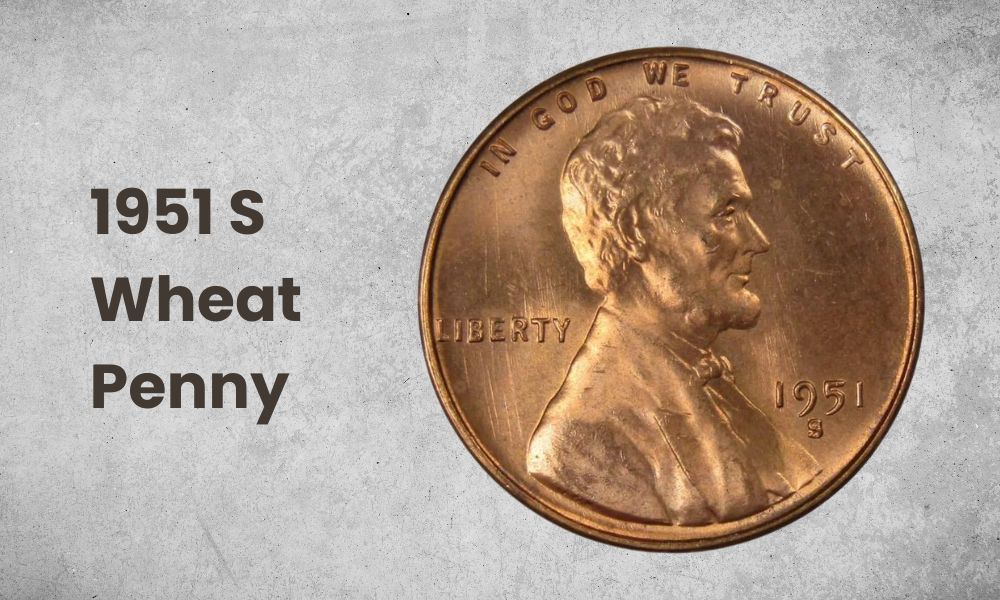
- Type: Lincoln Wheat Cent
- Edge: Plain
- Mint mark: S
- Place of minting: San Francisco
- Year of minting: 1951
- Face value: $0.01
- $ price: $0.05 to $4,230
- Quantity produced: 136,010,000
- Designer: Victor D. Brenner
The San Francisco-minted wheat pennies of 1951 take the smallest mintage, hence why it commands a higher premium than the other variations. With only 14 million available today, you can get a G-4 1951 S wheat penny for the same price as an F-12 1951 D or P piece.
Despite their low mintage, gem examples are plentiful until MS-67. Unfortunately, the San Francisco Mint ran its dies too long, which they had to repolish too much. This ended up with a significant loss of details on the coins.
The 1951 S pieces also suffer a similar fate as the rest of the 1951 varieties, with a great majority of them being of circulated condition, although they are still common up the MS-66. At MS-67 and beyond, they become quite scarce.
The 1951 S penny has a similar price for lower-grade conditions with the other pennies, although they have a higher price for MS-60 coins and higher.
The current auction record is $4,230 for an MS67+ RD coin.
1951 Wheat Penny Value Values and Varieties (by Color)
The Lincoln wheat penny coins are made of 95% copper, and so the coins are subject to the same reactions that copper undergoes when exposed to the atmosphere.
1951 Red Wheat Penny
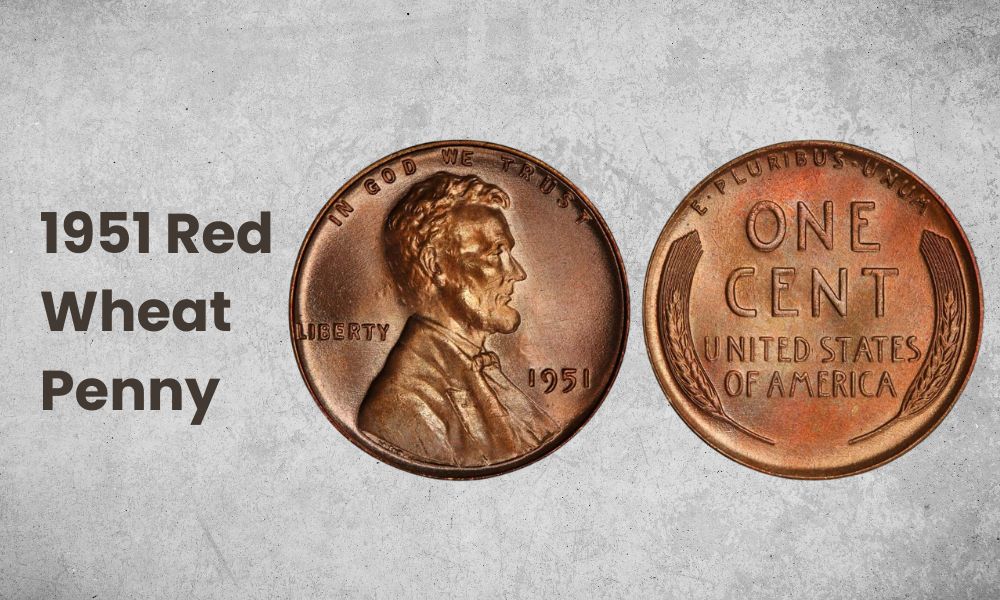
A freshly-minted wheat penny will have a lustrous reddish-orange color. When the coin retains at least 90% of this original color, coin collectors categorize them as a red (RD) wheat penny. These specimens are highly prized by many collectors, and most high-grade coins will be usually given this classification.
1951 Red-Brown Wheat Penny
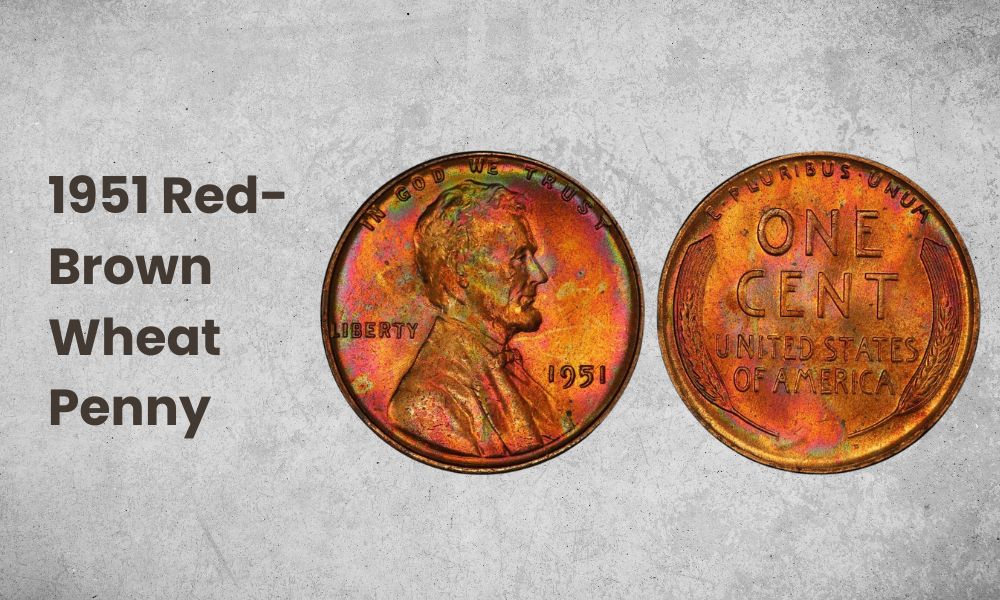
When the coin’s copper starts to oxidize, certain parts of the coin start to turn brown. There will be some coins where the entire coin has not oxidized yet, so these are still prized by collectors, but not as much as RD coins.
When about 10% to 90% of the coin still has a red color, the coin would be graded as a red-brown (RB) coin.
1951 Brown Wheat Penny
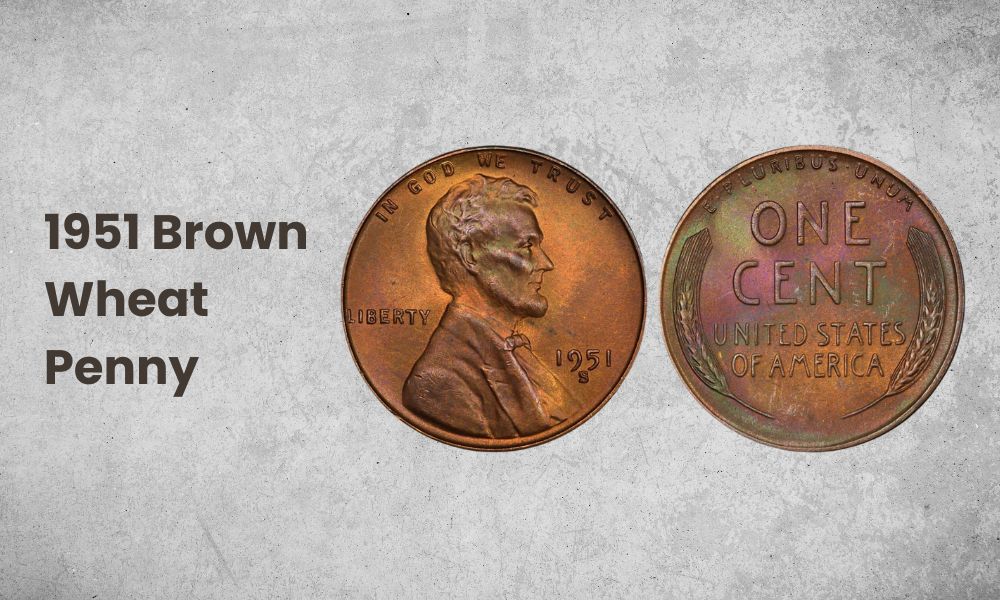
Most circulated coins will have enough time and exposure to oxidize their entire surface. Lower-grade condition coins will have this chocolate brown color on their surface, which is categorized as brown (BN) coins.
1951 Wheat Penny Value History
The 1951 wheat penny coin is part of the series called the Lincoln wheat cent. This coin series was minted from 1909 to 1958. Its name is derived from President Abraham Lincoln, the first real person ever inscribed into a U.S. coin, and the second person found in a coin (the first being Lady Liberty).
1909 was about to mark the centennial anniversary of President Abraham Lincoln’s birth, who at that time was becoming a beloved icon among Americans. Then-President Theodore Roosevelt wanted to honor his fellow Republican so he enlisted the help of Victor David Brenner, who had designed a plaque of Lincoln before, for the design of the cent.
The Lincoln design is one of the last withstanding coin designs minted by the US Mint in the Philadelphia, San Francisco, and Denver Mints. Their mint marks appear on the obverse, right under the date.
The Lincoln penny is also called the wheat penny because of the ears of durum wheat present on the reverse of the coin. The Lincoln penny is also the first penny coin to have the motto “In God We Trust” inscribed on them.
1951 was also a significant year for numismatics since this was the second year since the end of the war that the government made proof pennies once again. With around 57,000 proof pennies from 1951, these can easily reach $80 in higher grade conditions.
1951 Wheat Penny Value Grading
Collectors utilize a coin grading scale to judge the condition of a coin. This scale goes from 1 to 70, but it is often simplified into qualitative categories, like Good, Fine, Almost Uncirculated, and Mint State.
The 1951 wheat penny coins are also graded according to their colors. The color categories are Red, Red-Brown, and Brown. Red is considered the most valuable, while Brown is not as valued, due to it being heavily circulated. You can check the YouTube video below to see how to grade these coins.
Lists of 1951 Wheat Penny Value Errors
Most 1951 wheat penny coin errors are found on Denver-minted coins, given that they produced the most coins. There are many errors that collectors value a lot, especially if they are RD. The most common errors are listed below.
1. 1951-D Wheat Penny Repunched Mintmark Error
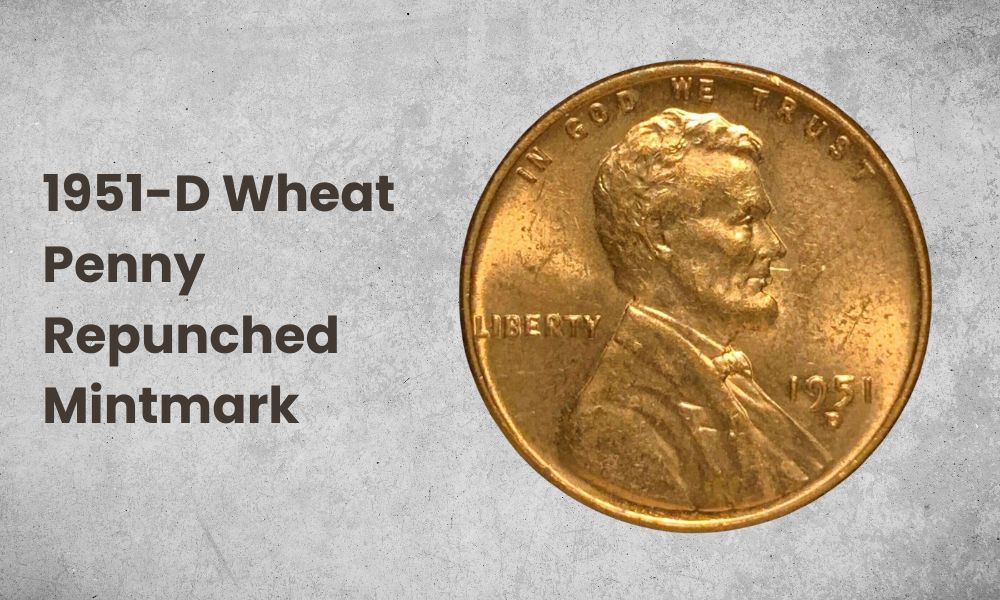
The 1951-D Lincoln penny repunched mintmark error occurs when the letter punch used for the mint mark leaves two or more offset impressions. The error is not readily seen, but you can check the D mint mark and look for some extra impressions that offset the supposed design
These coins can fetch quite the price, with an AU-50 coin of this error costing around $700.
2. 1951-D Wheat Penny Doubled Die Error
The doubled die error refers to the doubling of certain design elements on the coin. Note that this error was not because of double-striking the die into the coin, because the first design would need to have been flattened.
This error often occurs when the mint employee fails to align the coin hub above the coin die properly. The coin die ends up having an off-center impression of the same design, and coins minted using this die will have this doubling effect.
Many doubled die errors are not particularly obvious to the naked eye, with some only seen through a microscope.
The current record price for a wheat penny with this error is $225 with an MS64 BN coin.
3. 1951-S Wheat Penny S over D Overmintmark Error
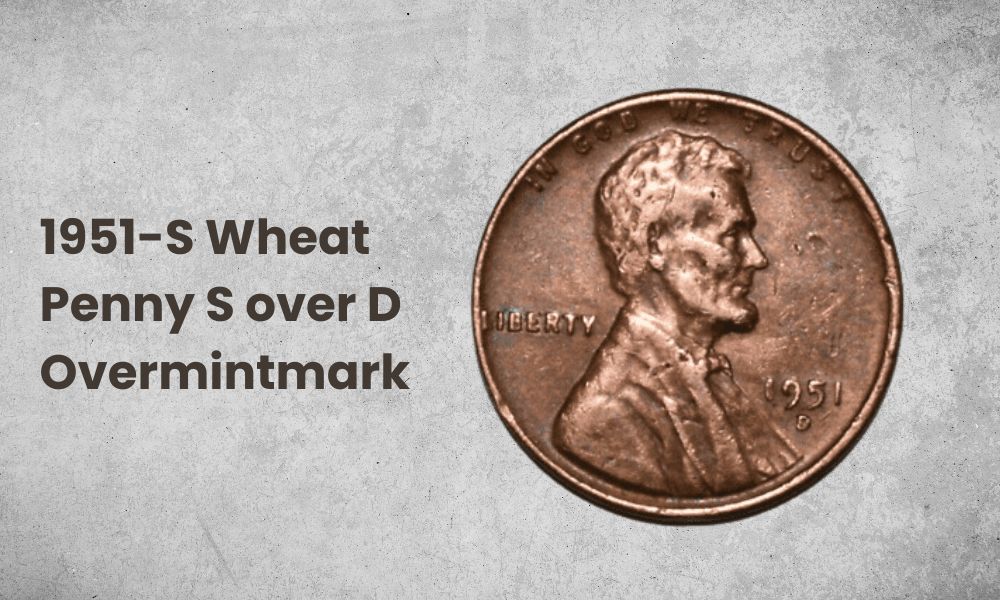
As the name suggests, the mint mark indicates two marks minted over each other. This is commonly seen on S coins, where the initial mint mark appears to be D, then struck again with the letter mark for S.
This error makes the mint mark on these coins chunkier than it should be. Unlike the previously mentioned errors, this error does not fetch quite the amount, with its record price of only $98 for an AU-58 BN coin.
1951 Wheat Penny Value Value FAQ
How much is a 1951 penny worth with no mint mark?
A 1951 wheat penny with no mint mark is worth around $0.05 to $2.28. As with any collectible coin, the price is heavily dependent on the condition of the coin. Wheat pennies are not just described through the usual categories. They have an additional classification regarding their color, from Brown to Red-Brown to Red. Red is considered the most valuable.
The current auction record is $10,350 for a 1951 P MS-67 Red coin.
Is a 1951 D wheat penny rare?
The 1951 D wheat penny had the highest mintage at over 600 million, and 62 million survived. So, unfortunately, they are quite common. What is rare, however, is higher-grade condition 1951 D coins, starting at MS-65. These coins can fetch quite the price, and even more so when they’re still Red.
Where is the mint mark on a 1951 wheat penny?
The mint mark of a 1951 wheat penny is found on the obverse (the front of the coin). You can take a look below the date mark. If there is no mint mark, it means that the coin was minted in Philadelphia. If there is a D mint mark, it was minted in Denver. If there is an S mint mark, it was minted in San Francisco
What is the error on the 1951 penny?
There are quite a lot of errors on the 1951 penny. You’ll find that most errors are present on the 1951 D pennies. Some common errors are the repunched mintmark, doubled die, over-mintmarks, off-center strikes, die cracks, and lamination errors.
Depending on the error, they can fetch quite the amount. The repunched mintmark has a current record price for a wheat penny of $225 with an MS64 BN coin.
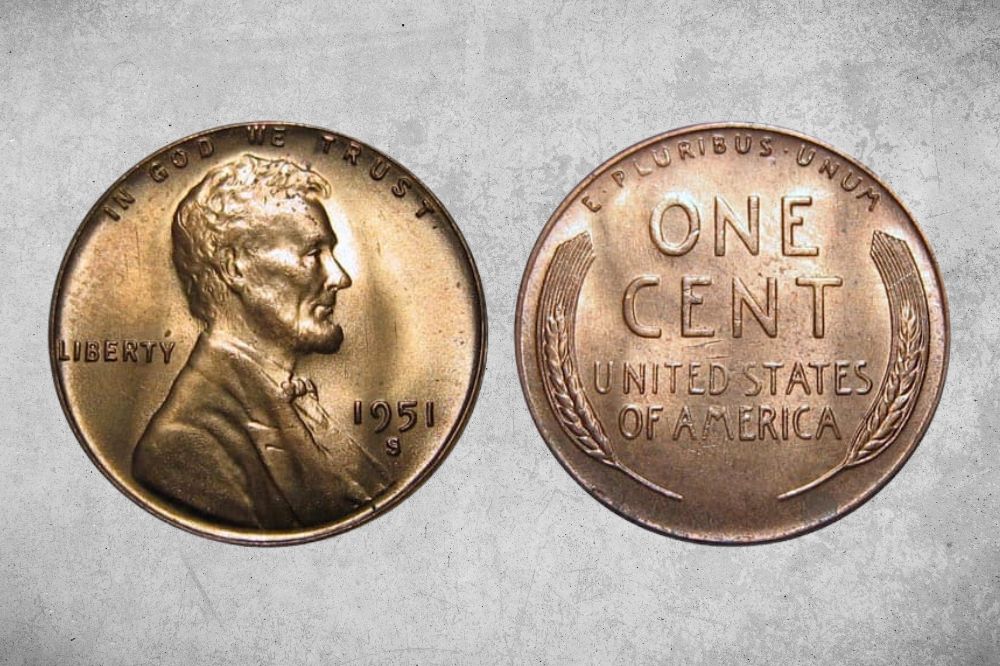
I have a 1951 D Big Smile, Lincoln Penny. Is that rare? And if so, what would be the approximate value?
1951 penny with no mint mark whats the value
I have a 1951 wheat one cent penny with no mint mark on it
my 1951 penny , no mint mark, on reverse the word pluribus has small letters “p” and “rib” all others are capitol letters. whats up with this?